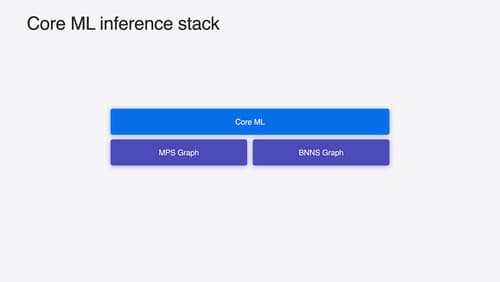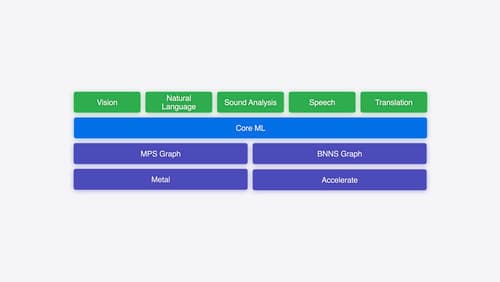how to run stable diffusion on my iPhone
Asked on 2024-08-12
1 search
To run Stable Diffusion on your iPhone, you can follow these general steps as outlined in the WWDC sessions:
-
Model Preparation: Start by defining the model architecture and training the model using libraries like PyTorch or TensorFlow. This can be done on a Mac, taking advantage of Apple silicon and the unified memory architecture.
-
Model Conversion: Convert the trained model into the Core ML format using Core ML tools. This step involves optimizing the model for performance and accuracy, leveraging techniques like quantization.
-
Integration with Core ML: Integrate the model into your app using the Core ML framework. Core ML optimizes the execution of the model across the CPU, GPU, and neural engine on Apple devices.
For more detailed guidance, you can refer to the session Explore machine learning on Apple platforms (07:16) which discusses running models on Apple devices, including Stable Diffusion.
Additionally, the session Deploy machine learning and AI models on-device with Core ML (12:33) provides insights into using multifunction models and performance tools, which can be useful when working with complex models like Stable Diffusion.

Analyze heap memory
Dive into the basis for your app’s dynamic memory: the heap! Explore how to use Instruments and Xcode to measure, analyze, and fix common heap issues. We’ll also cover some techniques and best practices for diagnosing transient growth, persistent growth, and leaks in your app.

Deploy machine learning and AI models on-device with Core ML
Learn new ways to optimize speed and memory performance when you convert and run machine learning and AI models through Core ML. We’ll cover new options for model representations, performance insights, execution, and model stitching which can be used together to create compelling and private on-device experiences.

Explore machine learning on Apple platforms
Get started with an overview of machine learning frameworks on Apple platforms. Whether you’re implementing your first ML model, or an ML expert, we’ll offer guidance to help you select the right framework for your app’s needs.
